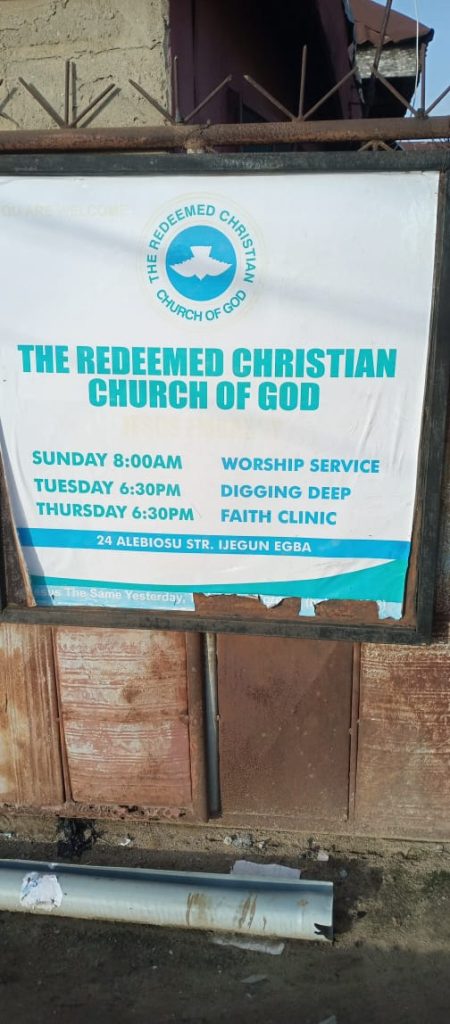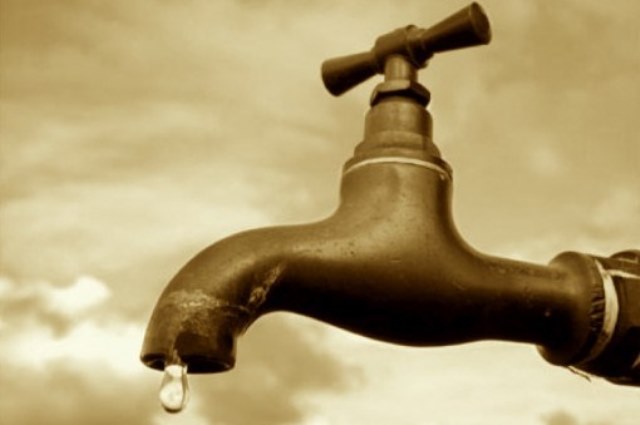…. But Reveals Room For More
In the heart of rural Lagos, where sunlight paints the landscape with its golden hues, a transformative initiative has taken root, a solar-powered water borehole that promises to redefine the daily lives of the community.
With the generosity of a forward-thinking donor, this innovative solution has emerged to tackle the longstanding challenge of water scarcity in that vicinity. But, is it enough?
Amidst the ceaseless buzz of daily news, one elemental truth often remains overlooked – the indispensable role of water in shaping the very fabric of our existence. Water is the linchpin of ecological equilibrium, the cornerstone of agricultural vitality, and a fundamental human right.
From sustaining ecosystems to quenching the thirst of burgeoning populations, water’s role is indisputably irreplaceable. Clean water has no alternative!
Let’s start this story from the beginning.
Nigeria’s biggest telecoms operator, MTN Nigeria Communications PLC, established the MTN Foundation in 2004 to manage its CSR initiatives. It was commissioned in May 2005 with MTN Nigeria Communication PLC committing up to 1% of its Profit after Tax (PAT) as its main source of funding for projects.
The MTN Foundation partners with both public and credible private organizations to execute sustainable projects in each of the chosen focus areas and is committed to ensuring that the selection and approval of its projects are conducted in a manner that is transparent, systematic, efficient, and effective while promoting its mission which is to improve on the quality of life through Health, Education, Youth Development and National Priority initiatives on a sustainable basis in such a way as to impact positively on the MTN brand.
MTN Foundation has invested over NGN23.7 Billion in the 36 states of the federation and FCT and has over 1,017 project sites across Nigeria with 50 unique projects that span across 3,319 communities and reached over 31,234,793 people.

The MTN Foundation has an initiative called What Can We Do Together designed as a ‘give-back’ initiative where Nigerians nominate selected projects they consider of utmost importance to communities (via SMS or Web platforms) for consideration and implementation by MTNF.
The community-based projects normally implemented include the Set-up of ICT labs in public secondary schools, supply of medical equipment and consumables to Primary Healthcare Centres, and Installation of 650ft solar-powered boreholes.
I reached out to them for a list of water interventions, via the WCWDT initiative, in South-West Nigeria. Here is the list I got:

Now, the adventure begins!
With the aid of Google Maps, along with some help on the road, I started the journey to Alebiosu Street at Abule Ado, Ijegun, Satellite town, Amuwo Odofin LGA, Lagos.
The roads were free on that beautiful Tuesday morning (I deliberately avoided going on a Monday due to the popular Lagos traffic on that axis: Mile 2 – Alaba road).
After driving for about an hour, we got to the street. Finally, we’re here!

I walked the entire length of the street, jumping gutters and avoiding pools of water. Hoping to find the Solar-powered borehole donated by MTN. It was a long walk as the street covers over 1.5km.

Unable to find it the first time, I walked back, more carefully and dutifully this time, asking locals for information. As I did, I made a lot of observations about Alebiosu Street but I was more focused on the task at hand – where is the Solar-powered water project erected by MTN?
I got to the beginning of the street and, sadly, nothing! I began to wonder, many questions flooded my mind. But of course, I never doubted the reality of the project!
I had to ask more questions and a local referred me to Hon. Aliu, a community leader on the street.
I met him and he allayed my fears with the information I wanted to hear! ‘The project is on Essie Street’, 2 streets away and less than 5 mins walk from Alebiosu. He was kind enough to assign one of the boys from the hood to accompany me and give me a proper tour.

The journey to Essie began and I continued to make more observations as we left Alebiosu.
We got to Essie after a few minutes, and I saw a ‘popular’ church (I have seen their publicity material before now), Divine Testimonies Healing Ministries, on the street.

Eureka! There it is. Ladies and gentlemen, we found it just as I was told.
Laying on Essie Street, a few blocks away from the Church, is the MTN Foundation WCWDT solar-powered water project that was listed as 49, Alebiosu Street.
I got to work immediately and spoke to locals about the project.

I spoke with Baba Tawa, a resident who has lived on the street all his life. He was with his tenant, Chinedu, and another local, Rauf.
“The tap is opened in the afternoon and evening for use” he says to much delight. This is understandable as the water is solar-powered. He goes on to tell us how sufficient and far-reaching the project has been for the residents.
“The water is sufficient. It serves everyone on the street. We all fetch water here” he tells us.
I then asked him what the water is being used for.
“We drink it. We use it to cook.” I asked further about the streets around them, and how they cope with water, and the response from Rauf and Chinedu was:
“We are suffering from lack of water around here, the residents on Essie are a bit OK but the streets around such as Alebiosu lack water.”
Before the construction of this borehole, how do you cope with water? “We use water from the well for all our activities,” he reveals.
“If a compound doesn’t have a well, they share from other compounds who have dug a well. At least 2 or 3 houses away, you’ll find a well. “For drinking, before this borehole, we buy water.”
From my estimation, I counted about 50 houses on the street (most being small houses and face-me apartments with at least 8 rooms in each apartment). These houses have occupants (families) in separate rooms and each family has an estimated minimum of 3 occupants per room. This gives an estimated reach of 1,200 individuals on Essien Street benefitting from the water project.
The water project also serves residents from neighboring streets of Alh Maiyegun, Rafiu Monkelegbe – which has a primary health center, and Rasaq Oladeja Street. When you add a few occupants of these adjourning streets whose houses are quite close to Essie Street, the reach would most likely be above 2,000 users.
This donation marks not only a momentous leap forward in the pursuit of water security but also a testament to the power of renewable energy in shaping a brighter future for the residents of rural Lagos.
Beyond quenching immediate thirst, this initiative holds the potential to uplift and empower a community long overlooked in the shadow of urban development.
Undoubtedly, the water project has been of tremendous help and succor to the people at Essie. Life is easier and clean water is now accessible and free!
Alebiosu on my mind
After leaving Essie, and all the way home, my heart continued to feel bad for the people of Alebiosu Street. I had to go back! How were they coping? I began to ask around and have conversations with residents.
Before now, a popular politician and representative of the area in the National Assembly saw to it that one MDG project (water-related) was cited on the street. Sadly, it has not been in use for about 5 years and the materials are rusting away. I was told that it fell at some point and the people had to re-erect it. However, the project remains a shadow of itself – the taps are all broken, and might even be hazardous (the iron is rusting rapidly and it might as well collapse again.

There is a market at the entrance to the street and I counted at least 87 houses (buildings) on the street. It is littered with shops, religious houses, a school, and of course, residential buildings.
It would interest you to know that digging for clean water on Alebiosu Street is like digging for gold. Many have dug boreholes only to discover that the water is of no good use.
I find my ‘tour guide’, Tunde, and he gives me more information.
“This place is an opportunity for good-spirited firms. You know, when a Corporate entity comes digging for water it is easier to bear the cost than when one resident, a private individual, is carrying it out.
“Many residents have dug boreholes before now and they had to condemn the borehole because the water contains iron and other impurities and is of no use”.
I spoke to a nutritionist, Oluwatobi Ayanda, who affirmed that drinking unsafe water is a perilous gamble with human health, a risk with profound consequences. “Contaminated water sources harbor invisible threats, hosting a sinister array of bacteria, viruses, and pollutants that can unleash a cascade of diseases,” he tells me.
“From gastrointestinal infections to waterborne epidemics, the repercussions are far-reaching and devastating. The insidious nature of unsafe water is particularly insistent in vulnerable populations, where lack of access to clean water becomes a breeding ground for illness and a hindrance to societal progress.”
This is the reality of residents at Alebiosu.
Tunde would later reveal to me that at least, they had discovered a spot that produces clean water right under a huge tree at Alebiosu Street!
We rush there and it all makes sense! All the pipes I had seen during my first visit.
Right beside this tree, everyone who is in need of water and can afford it, digs a borehole and runs pipes from the tree to wherever they live on the street. I saw multiple pipes, to the left, to the right, across the street. Pipes measuring tens of meters in a dirty gutter. Some were leaking and tied with a leather band. It was a sorry sight to behold. But of course, people need water and would do what they have to do to get water.
I was told that the desperation and search for water on that street (and in the entire area) is huge. There are reports of innocent girls getting raped early in the morning all in a bid to get water!
“Raping of innocent girls will stop. Just as it is on Essie, we need water at Alebiosu. The one on Essie is beneficial, but the one on Alebiosu will be more beneficial. It doesn’t have to be under the tree…” A local, and his friends, tell me as they speak to me switching from Yoruba to English.
MTNF has erected a solar-powered borehole at Essie Street.
From what my eyes saw, Alebiousu Street has a water crisis and also deserves a water project. Perhaps, it wasn’t a mistake they were on the list – fate at work?). So, What Can We Do Together? It could be MTN Foundation, it could be another firm/NGO, it could be YOU, but can the residents of Alebiousn have some good, free water? Who is coming to their aid?

The donation of a solar-powered water borehole will stand as a beacon of hope, health, and life for the people, symbolizing a transformative journey towards sustainable development.
We can make the hum of the pump, powered by the sun’s energy, echo through the community, carrying with it the promise of clean water for generations to come. Water is life.
If interested in helping out, please reach out to Hon. Aliu (08033065336) or Hon. Adewale (09138486827). They are locals who are committed to ensuring that such support is carried out with ease.












